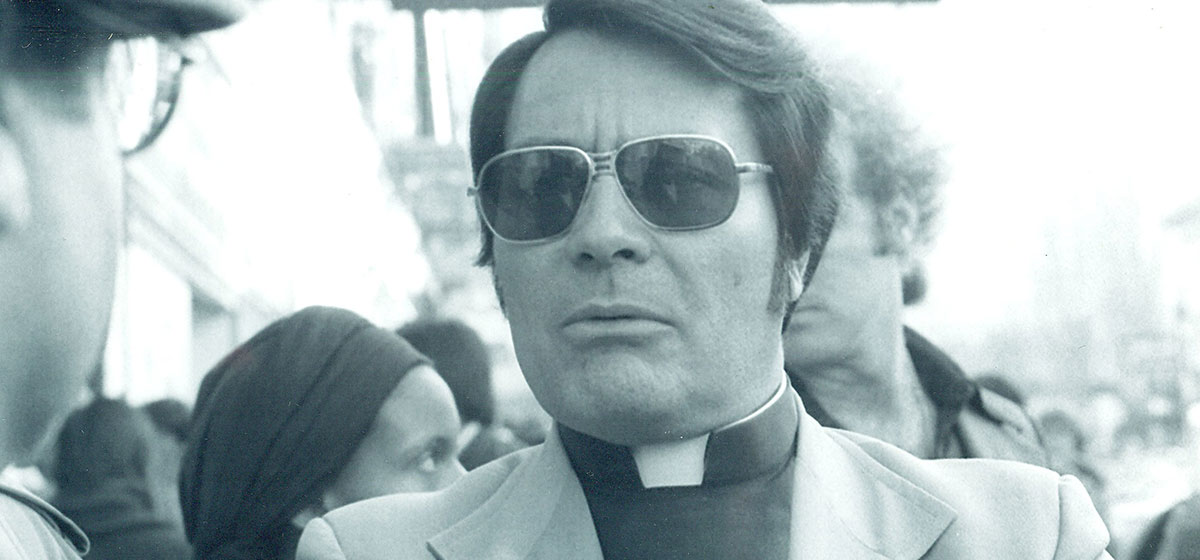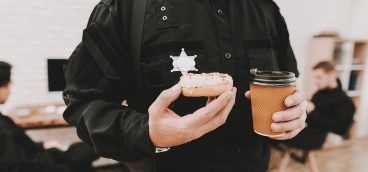You Meet the Strangest People…

I arrived at the Mayor’s office a bit early, announced myself and took a seat in the waiting room. I had only been there a minute or two when a lady came out, told me the Mayor would be with me soon, and asked me to fill out a form while I was waiting.
Previously in this series: “Surprising the Mayor: Richard Lugar, Part IV”
I looked at the form, and across the top of it, the caption read, “City of Indianapolis, Application for Employment.”
Whaa?
The Mayor ushered me into his large and gorgeous office, one end of which was set up like a living room. We sat down there and the Mayor began telling me about the meeting of the National League of Cities and his conversations with John Lindsay, the Mayor of New York.
While Lugar was talking I crossed my legs and almost gasped out loud. I hadn’t wanted to show up at the Mayor’s office in my MP combat boots or in my IPD clodhoppers, so I’d gone to JC Penney and bought a very cheap pair of new shoes. All the way downtown those shoes had been hurting my feet and I was sure I’d have blisters.
But now, as I stared at the shoes I saw that they had cut through my socks and dug into my ankle and a crooked line of blood was dripping off the shoe onto Lugar’s beautiful, silver-blue carpet, forming a little puddle down there.
Fortunately, the Mayor didn’t notice and I didn’t clue him in. I got hired.
My title was Commissioner of Youth Affairs, whatever that meant. It didn’t seem to have much to do with young people. What I mainly did was whatever anybody asked me to do, most of it gofer-ish.
But I did have a few interesting experiences, including:
Drinking the Kool-Aid
One day I returned to the Mayor’s office after a meeting and observed that there was an odd-looking fellow waiting in the lobby. The guy had hair so dark it looked like it had been dyed black, and he was wearing sunglasses even though he was indoors.
Thinking the guy was blind (blind people weren’t yet “visually impaired”), I walked over and asked if I could help him. The guy slowly raised his head to look at me and said, without any expression on his face at all, “I’m here to see the Mayor and I’m very tired of waiting.”
Well! I went back to the Mayor’s office to tell him some weird guy was in the waiting room and was getting steamed about the wait. But when I got to the office a loud argument was going on — about that very guy.
What was happening was that Lugar wanted to see the guy but his senior staff — to the last person — wasn’t having any part of it. I promptly sided with the Mayor. It seemed to me that if somebody wanted to see the Mayor and the Mayor wanted to see him, that was the end of the matter.
But Lugar and I lost the argument and the weird guy stormed off in a huff.
* * *
Jim Jones was born in a tiny Indiana village over near the Ohio line, but in his twenties he moved to Indianapolis and opened the Peoples Temple Christian Church Full Gospel. The Peoples Temple was a faith-healing enterprise, of which there were a great many in the American Midwest and South at that time.
But what set the Peoples Temple apart from other, similar churches was that the Peoples Temple was integrated. Many people have forgotten that as recently as the 1960s, many northern cities were nearly as segregated as the Deep South.
Lugar told me that when he was beginning his political career (he served on the city school board) most restaurants in the city had discreet signs on the front door reading, “Negroes Not Served,” or sometimes, “Colored Entrance Around Back.”
The same was true of most public venues: schools, libraries, neighborhoods, even hospitals. But The Rev. Jim Jones hated segregation and he was determined to do something about it.
In the early evenings Jones and a handful of his parishioners — equally divided between African-American and white — would show up at a downtown restaurant and demand to be seated. The manager would tell Jones that the whites could come in, but not the others. Jones would refuse to leave and eventually the manager would call the cops.
But Jones had thoughtfully given the media a heads up, and the next day the restaurant in question would find itself uncomfortably featured on the front page of the newspaper. Jones repeated this stunt week after week until finally, unable to stand the bad publicity any longer, the restaurant industry caved and the no-Negroes signs came down.
Before Jones could identify his next target, he decided to move his ministry to California, where he could raise more money. Indeed, Jones quickly became something of a power broker in Northern California because of all the votes he controlled. People like Jerry Brown, Walter Mondale, and Dianne Feinstein sought Jones’s endorsement.
But it wasn’t long before disturbing reports began coming out of his commune in Uriah — people who didn’t toe the Jones line were being subjected to physical, mental and sexual abuse. Jones, it was said, was also a Communist who had turned against religion, advising his congregation to “use the Bible as toilet paper.”
Thus the almost irreconcilable argument. To Lugar’s staff, Jones was a kook, a faith-healing fraud, and probably worse. To Lugar, Jones was a civil rights hero.
Six years later, when I read the headlines about the ghastly events in Jonestown, Guyana, I had a few very bad moments. Suppose Lugar and I had won the argument that day back in Indianapolis and Lugar had seen Jones? Suppose Lugar had appeared in public with Jones and his name had become associated with that of the mass murderer?
Sometimes, it’s better to be lucky than smart.
Next in this series: “Richard Lugar, Part VI”





